Significance
Nankunshen Daitian Temple has a long history and has contributed to the beginning of many other Wang Ye Temples both in and outside of Taiwan. As the largest Wang Ye Temple in Taiwan, Nankunshen Daitian Temple can be regarded as the center of Wang Ye Worship in Taiwan and is sometimes even referred to as the “Chief Temple of Wang Ye.” The Temple also holds Taiwan’s biggest Wang Ye Festival each year. Complete with all its traditional worship rituals and folklore performances (zhèntóu), the festival serves to preserve the beauty and unique character of this religious culture. Nankunshen Daitian Temple was renovated and expanded by master carpenter Wang I-Shun (1861 – 1930) during the Japanese period in Taiwan (1895 – 1945). Wang chose to preserve the temple’s original Minnan (Southern China) style. The intricate layout, woodwork, carvings, and sculpture resulted in Nankunshen Daitian Temple becoming known as one of the most beautiful temples of the time.
History
Nankunshen Daitian Temple enshrines five divine emissaries of heaven known as the Nankunshen Kings or the Five Lords Li, Chi, Wu, Zhu, and Fan.
The temple is the oldest temple of the Five Lords, who are collectively called Wang Ye and are the center of the Wang Ye folk religion. The story goes that an Wang Ye boat ran aground in the Nankunshen area at the end of the Ming Dynasty, in the early 1600s. Within the boat were statues of Lords Li, Chi, Wu, Zhu, and Fan. Fishermen built a thatched enclosure in which to enshrine and worship the statues. In 1662, a temple was constructed to replace the hut. Over the years, the sandy beaches of Nankunshen were frequently inundated by rising sea waters and the temple underwent several renovations and reconstructions. The construction of a new main hall, Lingxiao Hall, in 2012 completed the graceful temple layout that is seen today. Nankunshen Daitian Temple has imparted the divine presence of Wang Ye (usually in the form of a statue) to other cities for the construction of their own Wang Ye Temples many times. Today, over 21,000 Wang Ye alters exist in Taiwan. Spring and summer are the main seasons for pilgrimages and worship. Wang Ye Temples host the greatest number of worshippers, the longest temple festival, and most diverse range of cultural events in Taiwan. In 1983, Nankunshen Daitian Temple was registered as a national historic landmark and a three star tourism destination by The Michelin Green Guide.
Special Features

1Architectural Layout and FeaturesNankunshen Daitian Temple covers an area of approximately approximately 200,000 square meters. The complex is made up of three rows of buildings each has nine sections across their façades and has two wings running from front to the rear on the sides. As seen from the front, the temple is divided into three shrines. In the middle are enshrined the Five Lords. The left and right shrines are dedicated to the worship of the city god and his administrative office. Nankunshen Daitian Temple has three worship halls from front to back—the Sanchuan (Front) Hall, main hall, and rear hall. Apart from these original structures, renovations since the 1970s have also added a worship pavilion, a hallway, a visitors’ building, Lingxiao Hall, Dakun Garden, and the large arch-gate in the front.
The original buildings were mostly built of a mixture of granite and bluestone. Both relief and inset carving techniques were used for decoration, a common design feature of work done during the Japanese era in Taiwan. Since master carpenter Ong Ek-Sun, who oversaw renovations done during this period, hailed from mainland China’s Quanzhou City, the temple also contains many features unique to Quanzhou carpentry. The most prominent examples of this style are the golden goose head decoration on the gable and the plaster and mosaic flowers adorning the red brick walls.
The Sanchuan (Front) Hall is topped by a series of three hip-and-gable roofs which run lengthwise across the building. The main shrine in the center adds a double set of eaves with an extra gable to the top of its roof so that its ridgeline is raised above the ridges of the two side roofs, a symbol of respect to the main shrine. The main shrine is three kaijian wide and four jinshen deep (an ancient architectural unit used to calculate the depth of a building). From the inside, the spectacular gable roof trusses, consisting of a series of three round beams and five vertical post assemblies, are visible. The main and rear halls are only three kaijian wide each, and are imbued with a spooky atmosphere that is suitable to Wang Ye’s role as a hunter of ghosts and messenger of the spirit realm.
2The Five-Entrance Wooden Arch-Gate (páilóu)The 1983 expansion added a main gate to the temple. The resulting five-entrance, wooden arch-gate (páilóu) is the largest arch-gate in Asia. Typically, arch-gates to temples are two columns topped by a simple entablature. With the exception of the jiǎnnián (mosaic cut-and-paste porcelain), the roof tiles, and the bases of the columns, the entire arch-gate of Nankunshen Daitian Temple is made of wood, with tongue-and-groove joinery. The twelve main pillars were cut from entire Taiwan cypress trees (an endangered species that can no longer be logged), and measure eighty-one centimeters in diameter and fourteen meters in length. The magnificent double-eaved roof is the work of Wang Jin-mu (1909 – 1996), the nephew of master carpenter Ong Ek-Sun.
3The Golden Stele A stunning feature of Lingxiao Hall is the large imperial edict stele (imperial edicts being official proclamations issued by the holy emperor of the divine realm) made of pure gold. The stele measures 6.6 meters tall, two meters wide, and sixty centimeters thick, and is valued at approximately 600 million NTD. Nankunshen Daitian Temple collected donations of gold from believers for over half a century and additionally purchased approximately 405 kilograms of gold to create the stele. It is said to be the most spectacular gold stele in the world.
A stunning feature of Lingxiao Hall is the large imperial edict stele (imperial edicts being official proclamations issued by the holy emperor of the divine realm) made of pure gold. The stele measures 6.6 meters tall, two meters wide, and sixty centimeters thick, and is valued at approximately 600 million NTD. Nankunshen Daitian Temple collected donations of gold from believers for over half a century and additionally purchased approximately 405 kilograms of gold to create the stele. It is said to be the most spectacular gold stele in the world.
4Wall of Coins Behind the main hall is a wall known as the Wall of Coins. It is named for the design of the stone tiling, which is reminiscent of ancient Chinese coins. During Nankunshen Daitian Temple’s 1926 reconstruction, Neiqian Temple of the Penghu Islands donated coral stone and shipped it by boat to Taiwan. Each “coin” is made of a square coral stone tile surrounded by four hexagons, the whole forming an octagonal shape. The design has particular artistic merit because it also alludes to the bagua talisman—the eight trigrams—of Taoist teaching, a symbol of wealth and good fortune. The bottom right hand corner of the wall is inscribed “Donated by Neiqian Temple of Penghu Islands in 1926.” The wall stands as proof of the close relationship between these two Wang Ye temples.
Behind the main hall is a wall known as the Wall of Coins. It is named for the design of the stone tiling, which is reminiscent of ancient Chinese coins. During Nankunshen Daitian Temple’s 1926 reconstruction, Neiqian Temple of the Penghu Islands donated coral stone and shipped it by boat to Taiwan. Each “coin” is made of a square coral stone tile surrounded by four hexagons, the whole forming an octagonal shape. The design has particular artistic merit because it also alludes to the bagua talisman—the eight trigrams—of Taoist teaching, a symbol of wealth and good fortune. The bottom right hand corner of the wall is inscribed “Donated by Neiqian Temple of Penghu Islands in 1926.” The wall stands as proof of the close relationship between these two Wang Ye temples.
5Dakun Garden Next to Nankunshen Daitian Temple is a beautiful garden of manmade hillocks, streaming water, ponds, and pavilions, all built in traditional Suzhou-Hangzhou style. It is a great place for worshippers to rest. The garden also includes the Nankunshen Cultural Museum, which offers detailed information on Wang Ye worship and its development throughout history. It is a great place for visitors to learn about how the religion developed and spread to other cities. The divine spirit of Wang Ye has also slowly spread, by means of consecrated statues, to many temples throughout Taiwan.
Next to Nankunshen Daitian Temple is a beautiful garden of manmade hillocks, streaming water, ponds, and pavilions, all built in traditional Suzhou-Hangzhou style. It is a great place for worshippers to rest. The garden also includes the Nankunshen Cultural Museum, which offers detailed information on Wang Ye worship and its development throughout history. It is a great place for visitors to learn about how the religion developed and spread to other cities. The divine spirit of Wang Ye has also slowly spread, by means of consecrated statues, to many temples throughout Taiwan.
6Incense-Offerings to the Five LordsAccording to traditional practice, an existing temple must impart its divine spirit (in the form of a statue) in order for a new temple to be constructed. The statue residing at the new temple should make a pilgrimage back to its original temple each year to pay respects and renew its divine power. As the first Wang Ye Temple in Taiwan, Nankunshen Daitian Temple has furnished many effigies to other temples and therefore is visited by countless statues throughout the year.
1. Incense-offering dates, according to the lunar calendar:
a. End of the fourth month: The first incense-offering of the year is held in celebration of Lord Li’s birthday (the 26th of the fourth month) and Lord Fan’s birthday (the 27th of the fourth month). Since the event is right between spring and summer, and Lord Li, as the chief of the five lords, has contributed to the largest number of temples, this is also the most attended incense-offering in the year.
b. Middle of the sixth month: The second incense-offering is held in celebration of Lord Chi’s birthday (the 18th of the sixth month) and the birthday of Guanyin, the Goddess of Mercy (the 19th of the sixth month).
c. End of the eighth month: The third incense-offering is in celebration of Lord Zhu’s birthday (the 15th of the eighth month) and Wang Ye’s birthday (the 24th of the eighth month).
d. Middle of the ninth month: The fourth incense-offering is for Lord Wu’s birthday (on the 15th of the ninth month). Because Lord Wu has gained fame and contributed to many temples since Japan’s withdrawal from Taiwan, this is the second most popular incense-offering of the year.
2. The incense-burning process
a. Incense-burning notice: A public notice is posted to inform the temple and surrounding residents of an upcoming incense-burning ritual.
b. Entering the temple (registering the visiting statue): Visiting groups first perform a series of rituals including praying, entering the temple, worshiping, and a muster of attendees. Prior to entering the temple, the procession must be in the correct formation. The leader is armed with a wūlìng, a device made of a long thin bamboo shaft shorn of all but the topmost leaves, which he uses to dispel any evil that might be lurking. After this is done, the procession enters the temple, led by folklore performers and the ghost-possessed (jītóng; a person believed to be possessed by a divine spirit, who can provide prophecies or manifest superhuman powers).
c. Incense-burning (the procession rests): Guarded by the ghost-possessed wielding five holy weapons, the palanquin carrying the visiting deity’s statue must then perform several ritual acts and movements before entering and resting inside the temple.
d. Exchanging censers (or combining censers): Each temple has a censer that symbolizes divine power. After waiting by the entrance, the visiting group then enters the main hall and mixes ash from the large censer of Nankunshen Daitian Temple into their own.
e. Passing over the censer: Believers carry the visiting deity’s statue along with other religious devices into the inner shrine and pass it over the large censer. This is done to absorb the power of the God of Nankunshen Daitian Temple.
f. Return (inviting the statue to depart): After passing over the censer, the entire procession is reformed for departure.
Reminders
Visitors should note that Nankunshen Daitian Temple’s Lingxiao Hall does not permit the burning of incense or joss paper money. The Kanglang Inn, which provides five star suites for overnight stays, is located nearby. The inn was built using traditional brick-and-mortar work and is laid out in a Chinese courtyard (sìhéyuàn) design. The elegant and classic design creates an atmosphere rich with culture and artistry.
Panoramic
Directions